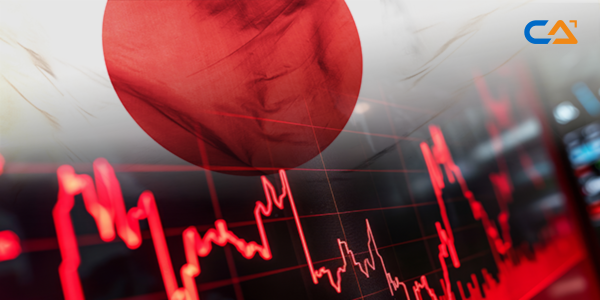Background
Magnitude of the Decline:
The Nikkei 225, Japan’s primary stock index, plummeted by 4,451.28 points, a 12.40% drop, closing at 31,458.42. This is the largest point decline in the index’s history, surpassing the 1987 Black Monday drop, though it is the second-largest percentage decline. The selloff was driven by risks associated with a stronger yen, tighter monetary policy, and concerns about a potential US recession. Fears of an economic slowdown in the world’s largest economy often create a ripple effect across global markets, as investors seek to manage their risk. Economic challenges in major economies like the US can lead to widespread instability in international markets. As a result, the panic that started in Japan quickly spread to other Asian markets, underscoring the interconnected nature of global financial systems.
Asian Markets Reaction
Major Asian markets, including Singapore (^STI), Indonesia (^JKSE), Thailand (^SET.BK), and the Philippines (PSEI.PS), saw declines ranging from 2% to 3%. Such uniform drops across multiple countries indicate a broad-based fear among investors about global economic conditions.
Key Factors Influencing the Nikkei 225 Decline
Unwind of Carry Trades:
- Impact: The unwinding of carry trades, where investors borrow in low-yield currencies to invest in higher-yield assets, has exacerbated market moves. As funding conditions worsened, these trades were reversed, contributing to market volatility.
Yen Strength:
- Cause: A stronger Japanese yen, triggered by last week’s hawkish shift by the Bank of Japan (BoJ) and a dovish tilt by the Federal Open Market Committee (FOMC), has negatively affected Japanese exporters. The yen has appreciated over 13% since mid-July, increasing the cost of Japanese exports and impacting corporate profits.
Geopolitical Tensions:
- Impact: Rising geopolitical tensions, combined with lower trading volumes typical of summer, have contributed to increased market volatility and risk aversion.
Poor NFP Report:
- Impact: A disappointing Non-Farm Payroll (NFP) report has heightened concerns about economic growth, fueling risk-off sentiment and leading to broad-based liquidation of Japanese assets by global investors.
Technical Analysis
Price Levels:
- Support: The Nikkei 225 crashed to a long-term Fibonacci retracement level (61.8%) of the range from the March 2022 low to the recent July high, specifically at 31,460. This level is often watched by traders as a potential area of support.
Midpoint:
- Resistance: The midpoint of the Fibonacci range is at 33,554, which could act as a resistance level if the index attempts to recover.
Oversold Conditions:
- Technical Indicators: The index is currently heavily oversold across various technical indicators, suggesting that it may be due for a potential rebound or corrective move.
Conclusion
The Nikkei 225’s unprecedented drop highlights severe market anxiety about potential US economic troubles and their global impact. The widespread declines across Asian markets and the activation of circuit breakers illustrate the interconnectedness of global financial systems and the intensity of current investor concerns.
In these volatile times, staying informed and vigilant is crucial for navigating the complex landscape of global markets. Investors, policymakers, and economists alike will need to closely monitor these developments and their potential implications for the broader economic outlook.

